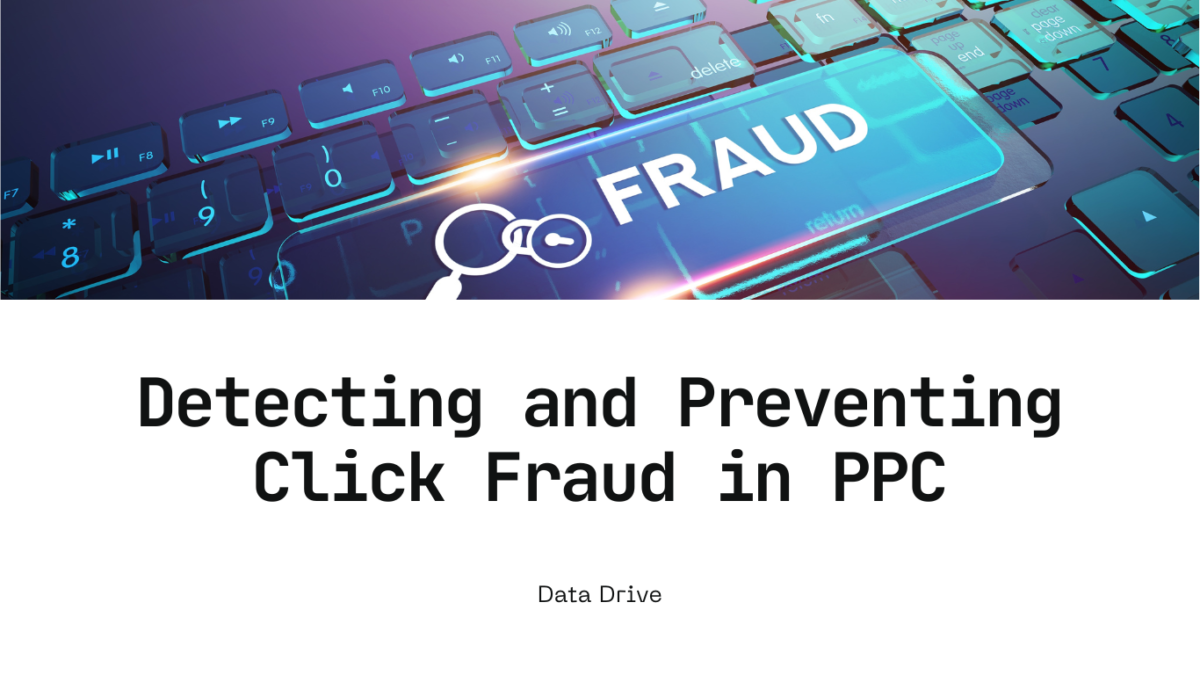Hey there, digital marketers! 👋 If you're running a Pay-Per-Click (PPC) campaign, you know the excitement of seeing clicks roll in. But what happens when those clicks start to look a bit suspicious? 🤔 That's right, we're talking about click fraud—a sneaky practice that can drain your budget without giving you any real value. Let's dive into how you can identify and eliminate click fraud using a data-driven approach. Ready? Let's go! 🚀
What is Click Fraud? 🤔
Click fraud occurs when someone clicks on your PPC ads with malicious intent. This can be done by competitors trying to deplete your budget or by automated bots designed to simulate real clicks. Either way, it's bad news for your campaign's ROI.
Signs of Click Fraud 🔍
Before we get into the math, let's identify some red flags: ● Unusual Spike in Clicks: A sudden increase in clicks without a corresponding increase in conversions. This could indicate that someone or something is clicking on your ads without any intention of buying. ● High Bounce Rates: Users leaving your site immediately after clicking the ad can suggest that the clicks are not from genuine prospects. ● Low Time on Site: Short session durations can indicate non-genuine interest. If users are spending very little time on your site after clicking an ad, it might be due to click fraud. ● Repeated Clicks from Same IP: Multiple clicks from the same IP address in a short period can be a clear sign of click fraud.
Collecting the Data 📊
First, you need to gather all relevant data from your PPC platform (like Google Ads) and your web analytics tool (like Google Analytics). Here are the key metrics to collect: ● IP Addresses: Track where the clicks are coming from. ● Click Timestamp: Note the exact time each click occurred. ● User Agent (browser details): Identify the browser and device used. ● Geographical Location: Determine the location of the user. ● Conversion Data: Track whether these clicks are resulting in conversions.
Mathematical Detection of Click Fraud 🧮
Now, let's crunch some numbers. Here's a step-by-step guide to identify potential click fraud: Calculate Click-Through Rate (CTR): CTR=(Total Impressions/Total Clicks)×100 Compare this to industry benchmarks. A significantly higher CTR might indicate click fraud. Analyze Click Patterns: IP Frequency Analysis: Calculate the number of clicks per IP address. Clicks per IP =Total Clicks/Unique IP Addresses If certain IPs show abnormally high clicks, flag them for review. Geographical Analysis: Use Geolocation Data to identify if clicks are coming from regions outside your target audience. Clicks from Suspicious Regions= Clicks from High-Risk Areas/Total Clicks A high percentage here can indicate fraud. Session Duration and Bounce Rate: Calculate the Average Session Duration and Bounce Rate. Average Session Duration=Total Session Duration/Total Sessions Compare these metrics against your historical data. Significant deviations can be suspicious. Time-of-Day Analysis: Plot clicks against time to see if there are unusual patterns (e.g., spikes during odd hours).
Tools to Help You Detect and Eliminate Click Fraud 🛠️
Several tools can assist in identifying and preventing click fraud: ● Google Ads Invalid Clicks Report: Automatically filters out suspicious clicks. Google uses sophisticated algorithms to detect and filter invalid clicks. ● ClickCease: Blocks fraudulent clicks in real-time. This tool provides detailed reports on click activity and can automatically exclude suspicious IPs. ● SEMrush & SpyFu: Competitor analysis tools that can reveal if competitors are engaging in click fraud. These tools can help you understand your competition and identify unusual activity patterns.
Implementing Fraud Prevention Strategies 🚧
Here are some proactive measures to prevent click fraud: ● IP Exclusion: Regularly update your IP exclusion list to block known fraudulent IP addresses. This can be done through your PPC platform settings. ● Geotargeting: Restrict ad exposure to your target geographical locations. This reduces the risk of clicks from regions where you don’t expect genuine interest. ● Frequency Capping: Limit the number of times your ad can be shown to the same user. This helps to prevent repeated clicks from the same user or bot. ● Retargeting: Focus on retargeting users who have previously engaged with your site meaningfully. Retargeting typically leads to higher quality traffic and reduces the likelihood of click fraud.
Monitoring and Adjusting Your Strategy 📈
Continuously monitor your PPC campaigns and adjust based on the data. Here’s how: ● Regular Audits: Conduct regular audits of your click data to identify any new patterns of fraud. ● Real-Time Monitoring: Use real-time monitoring tools to track clicks as they happen, allowing you to react quickly to suspicious activity. ● Adjust Bids and Budgets: If you notice patterns of fraud in certain areas or times, adjust your bids and budgets to minimize exposure during these periods. ● Educate Your Team: Make sure your marketing team is aware of click fraud and knows how to identify it. Training sessions can be very beneficial.
Conclusion 🎉
Click fraud is a pesky problem, but with a data-driven approach, you can protect your PPC budget and ensure genuine user interactions. By monitoring key metrics, employing robust detection tools, and adjusting your strategies accordingly, you'll keep your campaigns running smoothly and effectively. Happy marketing! 🚀 Feel free to share your experiences or any additional tips you have in the comments below. Let's help each other out in this battle against click fraud! 💬😊
